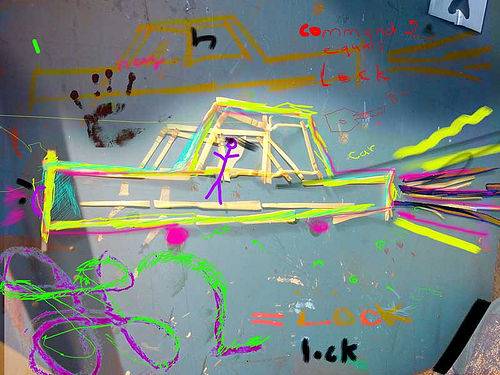 Children and cars both tend to idle around schools, and that is a noxious mix. Car exhaust, including exhaust from idling engines, is closely related to childhood asthma.
Children and cars both tend to idle around schools, and that is a noxious mix. Car exhaust, including exhaust from idling engines, is closely related to childhood asthma.
Hybrid cars and all-electric vehicles are the solution of the future, but right now they are beyond reach for many of us. Let’s read on to check out some no-cost and low-cost ways you can help reduce the impact of idling on children’s health.
The Facts About Idling.
Idling does more damage to your engine, wastes more gas, and causes more pollution than shutting off the engine and starting it up again. The rule of thumb is, if your car is stopped for more than 10 or 15 seconds and you’re not in an active traffic lane, turn off your engine.
Four Personal Solutions to Idling.
1. Avoid lines.
The simplest solution is to avoid waiting in lines, especially in school zones, near libraries, playgrounds, or other places where children congregate. Keeping age-appropriate safety a priority, try to drop off and pick up your child a block or two away from congested areas.
2. Walk or bike.
If you live a short distance from your child’s school, and there is a safe walking or biking route, now would be a good time to make them get there on their own steam. Concerned about push-back? Start off slowly by making it a once-a-week event.
3. Car-pool.
When walking even a short distance is not an option, car pooling is another way to cut down on the amount of time you spend in clogged-up waiting lines on school grounds.
[social_buttons]
4. Exercise Climate Control.
Unless the temperature is extreme, you don’t need to run the engine to feel comfortable while waiting in your car. Bundle everyone up and throw a blanket in the back seat when you go out in cool weather, and keep some paper fans in the glove compartment for warm weather.
Three Not-so-Personal Solutions to Idling.
1. School Buses and Idling.
School buses are part of the solution, but they can also be a big part of the problem. If your school doesn’t have a no-idling policy yet, contact your school administrator. No need to re-invent the wheel: there are free online programs that can help you start helping your school district clean up its bus idling policy.
2. Public Awareness and Idling.
Even if your town or school already has a no-idling policy, raising public awareness is still the key to making it work. In New York, a citywide no-idling campaign offers hip, kid friendly free downloads for signs to get drivers’ attention.
You can also visit the Clean Air Campaign to get ideas and read stories about schools that have successfully tackled the problem.
3. Green Grants.
Work vehicles, generators and other equipment on school grounds can cause a problem, too. Alternative energy retrofits could help your school cut its idling emissions. Look around for green grants and contests that can help make a pilot project low-cost or no-cost.
Image: nada abdall at flickr.com under creative commons.
[…] Do cars tend to idle on the library grounds? Ask about setting up and publicizing a no-idling policy. […]